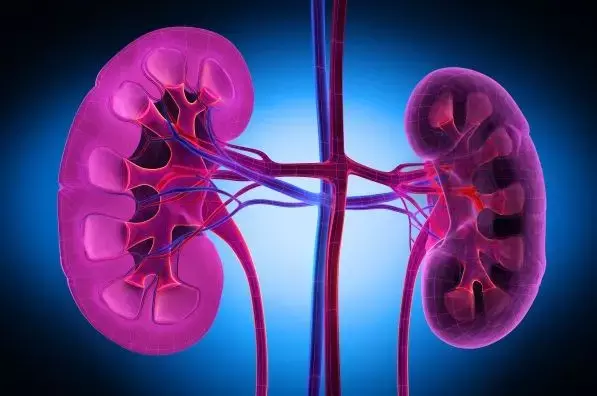- Home
- Medical news & Guidelines
- Anesthesiology
- Cardiology and CTVS
- Critical Care
- Dentistry
- Dermatology
- Diabetes and Endocrinology
- ENT
- Gastroenterology
- Medicine
- Nephrology
- Neurology
- Obstretics-Gynaecology
- Oncology
- Ophthalmology
- Orthopaedics
- Pediatrics-Neonatology
- Psychiatry
- Pulmonology
- Radiology
- Surgery
- Urology
- Laboratory Medicine
- Diet
- Nursing
- Paramedical
- Physiotherapy
- Health news
- Fact Check
- Bone Health Fact Check
- Brain Health Fact Check
- Cancer Related Fact Check
- Child Care Fact Check
- Dental and oral health fact check
- Diabetes and metabolic health fact check
- Diet and Nutrition Fact Check
- Eye and ENT Care Fact Check
- Fitness fact check
- Gut health fact check
- Heart health fact check
- Kidney health fact check
- Medical education fact check
- Men's health fact check
- Respiratory fact check
- Skin and hair care fact check
- Vaccine and Immunization fact check
- Women's health fact check
- AYUSH
- State News
- Andaman and Nicobar Islands
- Andhra Pradesh
- Arunachal Pradesh
- Assam
- Bihar
- Chandigarh
- Chattisgarh
- Dadra and Nagar Haveli
- Daman and Diu
- Delhi
- Goa
- Gujarat
- Haryana
- Himachal Pradesh
- Jammu & Kashmir
- Jharkhand
- Karnataka
- Kerala
- Ladakh
- Lakshadweep
- Madhya Pradesh
- Maharashtra
- Manipur
- Meghalaya
- Mizoram
- Nagaland
- Odisha
- Puducherry
- Punjab
- Rajasthan
- Sikkim
- Tamil Nadu
- Telangana
- Tripura
- Uttar Pradesh
- Uttrakhand
- West Bengal
- Medical Education
- Industry
Exostosin 1 and 2 protein markers predict prognosis of membranous lupus nephritis,finds study

Researchers have highlighted that the prevalence of Exostosin 1 and Exostosin 2 positivity was 32.6% in a cohort of membranous lupus nephritis, finds a new study. Further patients with EXT1/EXT2-positive membranous lupus nephritis showed less chronicity features (glomerulosclerosis, interstitial fibrosis, and tubular atrophy) compared with those from EXT1/EXT2-negative patient
The research findings, published in the Journal of American Society of Nephrology , has further affirmed that compared with EXT1/EXT2-negative membranous lupus nephritis, EXT1/EXT2-positive disease appears to represent a subgroup with favorable kidney biopsy findings with respect to chronicity indices.
It is well documented that in patients with secondary (autoimmune) membranous nephropathy, two novel proteins, Exostosin 1 and Exostosin 2 (EXT1/EXT2), are potential disease antigens, biomarkers, or both. So researchers aimed to validate the EXT1/EXT2 findings in a large cohort of membranous lupus nephritis.
The study was conducted as a retrospective cohort study of patients with membranous lupus nephritis, and performed immunohistochemistry studies on the kidney biopsy specimens against EXT1 and EXT2. Clinicopathologic features and outcomes of EXT1/EXT2-positive versus EXT1/EXT2-negative patients were compared.
Results put forth some interesting facts.
- The study cohort included 374 biopsy-proven membranous lupus nephritis cases, of which 122 (32.6%) were EXT1/EXT2-positive and 252 (67.4%) were EXT1/EXT2-negative.
- EXT1/EXT2-positive patients were significantly younger (P=0.01), had significantly lower serum creatinine levels (P=0.02), were significantly more likely to present with proteinuria ≥3.5 g/24 h (P=0.009), and had significantly less chronicity features (glomerulosclerosis, P=0.001 or interstitial fibrosis and tubular atrophy, P<0.001) on kidney biopsy.
- Clinical follow-up data were available for 160 patients, of which 64 (40%) biopsy results were EXT1/EXT2-positive and 96 (60%) were EXT1/EXT2-negative.
- The proportion of patients with class 3/4 lupus nephritis coexisting with membranous lupus nephritis was not different between the EXT1/EXT2-positive and EXT1/EXT2-negative groups (25.0% versus 32.3%; P=0.32).
- The patients who were EXT1/EXT2-negative evolved to ESKD faster and more frequently compared with EXT1/EXT2-positive patients (18.8% versus 3.1%; P=0.003).
Observing the results, the team concluded that , "The extent of chronic changes, including global glomerulosclerosis and tubular atrophy and interstitial fibrosis, in EXT1/EXT2-positive LMN are less compared with EXT1/EXT2-negative LMN. EXT1/EXT2-positive LMN rarely progress into ESKD, compared with EXT1/EXT2-negative LMN. These findings have significant bearing when considering the high burden of SLE in worldwide. Furthermore, the mortality rate is increased to approximately 2.6-fold in SLE, and the risk of mortality is the highest in patients with kidney disease. LN is the most common renal manifestation in SLE: almost 10% of the patients will develop ESKD, and 20% of LN biopsies show LMN with or without concurrent class 3/4 LMN."
For full article follow the link: https://doi.org/10.1681/ASN.2020081181
Source: Journal of American Society of Nephrology
Dr Satabdi Saha (BDS, MDS) is a practicing pediatric dentist with a keen interest in new medical researches and updates. She has completed her BDS from North Bengal Dental College ,Darjeeling. Then she went on to secure an ALL INDIA NEET PG rank and completed her MDS from the first dental college in the country – Dr R. Ahmed Dental College and Hospital. She is currently attached to The Marwari Relief Society Hospital as a consultant along with private practice of 2 years. She has published scientific papers in national and international journals. Her strong passion of sharing knowledge with the medical fraternity has motivated her to be a part of Medical Dialogues.
Dr Kamal Kant Kohli-MBBS, DTCD- a chest specialist with more than 30 years of practice and a flair for writing clinical articles, Dr Kamal Kant Kohli joined Medical Dialogues as a Chief Editor of Medical News. Besides writing articles, as an editor, he proofreads and verifies all the medical content published on Medical Dialogues including those coming from journals, studies,medical conferences,guidelines etc. Email: drkohli@medicaldialogues.in. Contact no. 011-43720751


